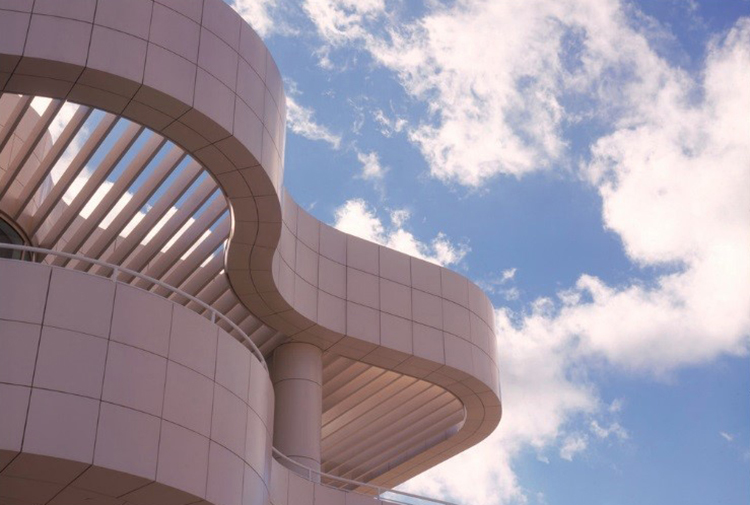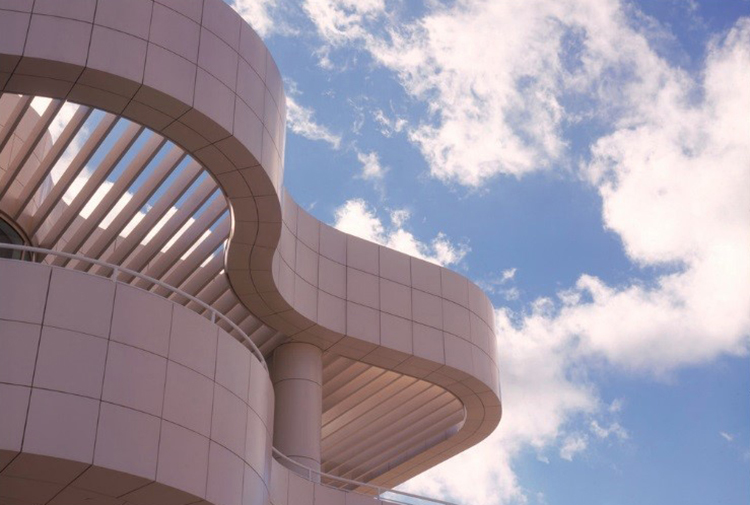[ad_1]

A detail of a “Piano Curve” at the Getty Center’s Richard Meier–design campus in Los Angeles, against blue sky and clouds.
ALEX VERTIKOFF/©2003 J. PAUL GETTY TRUST
Mark your calendars for 2024—another edition of the Getty Foundation’s Pacific Standard Time exhibition initiative is on the horizon.
On Wednesday, the Getty Foundation in Los Angeles announced that it would stage the third iteration of PST, titled “Art x Science x LA,” in five years’ time. Taking place across numerous arts, cultural, and science institutions throughout Southern California, PST: AxSxLA will look at the intersections between art and science in a variety of potential areas of interest, with climate change, augmented reality, alchemy, botany, and artificial intelligence among them.
“What we today recognize as art and science sprang from the same origins—a shared desire to explore and explain the universe in all its dazzling diversity,” Getty Trust president Jim Cuno said in a statement. “The Getty . . . encourage[s] museums and scientific institutions to open a far-reaching conversation throughout Southern California about their shared history, the critical challenges we face on our planet today, and the creative solutions they demand.”
As with previous iterations of PST, each participating institution will develop its own exhibitions that respond to the theme and will be able to apply for research grants to delve into associated topics. (The awardees of those grants will be announced next year.) This will also be the first PST to invite science institutions in California to participate in the grant applications and exhibition programming.
Though the participating institutions were not named in Wednesday’s announcement, the Getty said it convened two of the L.A.’s main arts institutions, the Hammer Museum and the Los Angeles County Museum of Art, as planning partners to determine the theme.
The Getty staged the first PST in 2011. That edition was titled “Art in LA 1945–1980,” and it aimed to shift the history of postwar art, placing an emphasis on L.A. artists’ essential contributions. A smaller version, “PST Presents: Modern Architecture in L.A.,” looked at design and architecture in the region and took place in 2013. The most recent one, 2017’s PST: LA/LA, was by far the largest to date. Focusing on the connections between Latin American and Latinx art to Los Angeles, the Getty gave $16 million in grants to produce the research, installation, and catalogues for many of the exhibitions. In all, some 70 institutions were official partners, with hundreds of concurrent exhibitions during the four-month run of the initiative.
In Wednesday’s release announcing PST: AxSxLA, the Getty said that the newest edition of PST will draw on Southern California’s history. It referenced Edwin Hubble using the Mount Wilson Observatory for his astronomical observations; the region’s aviation and aeronautics industries during the Cold War; NASA-affiliate Jet Propulsion Laboratory’s imaging of another planet’s surface; and LACMA’s groundbreaking Art + Technology Lab, which began in the 1960s.
Hammer director Ann Philbin said in a statement, “Artists and scientists share a common commitment to invention and imagination, and the mutual influence between art and science has an especially rich history in Los Angeles.”
[ad_2]
Source link

